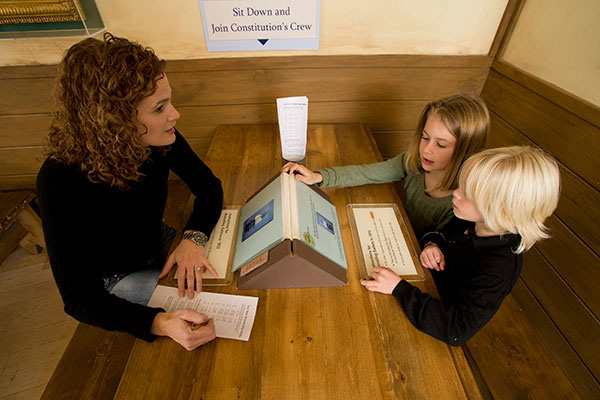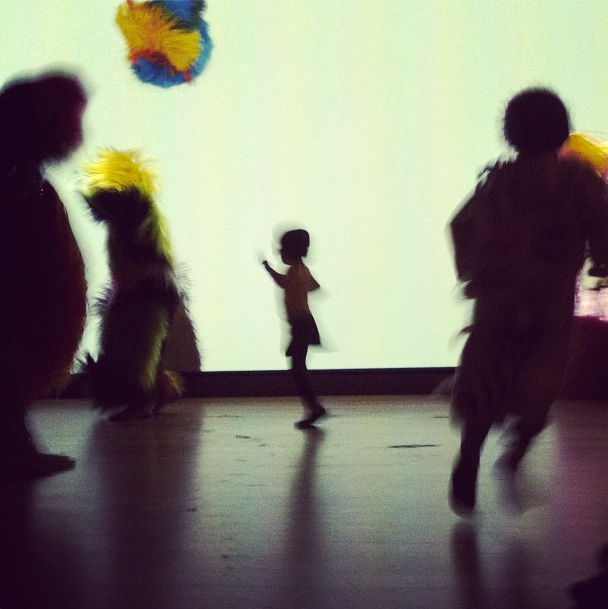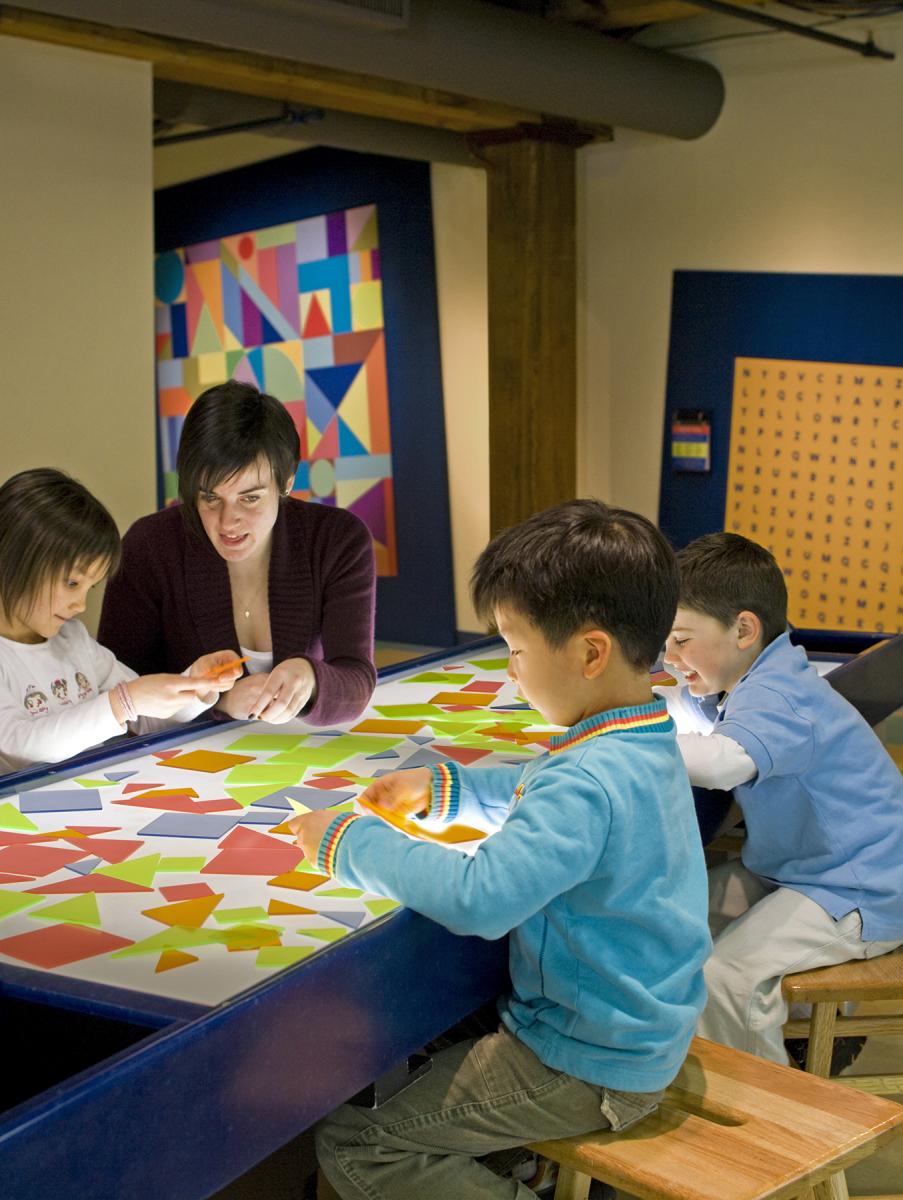By Margaret Middleton
So your museum wants to welcome families with children. You already know that welcoming families better serves the community and it also increases visitorship as the youngest visitors today are the members and donors of tomorrow.
But where to begin? A great way to start is by consulting the experts. And when it comes to designing multigenerational social learning experiences, children’s museums are certainly the experts.
Note, I said, “multigenerational social learning experiences” and not “exhibits for children.” Because that’s the best-kept secret of the children’s museum—we actually design for grownups too. Kids don’t visit museums on their own—their adult caregivers are the ones deciding whether to stay and explore, or even to visit at all. Keeping adults entertained and engaged is key to creating great experiences for our young visitors.
So how do we do it? I consulted two of my colleagues at the Boston Children’s Museum: Kate Marciniec, Director of Exhibitions, and Alice Vogler, Arts Program Manager. I asked them four questions and here’s what they had to say:
Why should museums design exhibits that engage both children and adults?
Children are visiting regardless of whether they were specifically invited or the exhibits were intended for them at all. So like it or not, they are part of the museum audience and need to be considered. Kate and Alice told me that one of the best ways to get children excited about their museum visit is through their grownups’ enthusiasm in a co-learning experience. It can be hugely inspiring for children to see adults modeling a love of learning. Kate explains that anecdotally, we understand that when adults are engaged in parallel play or co-play with their children, it deepens the learning experience for children. Alice agrees. When children see grownups actively engaged in learning it she says it “… invites them to be inquisitive and teaches them that these things—learning, play, investigating and making—never stop; it’s a life-long process and they are qualities that should be valued and nourished.”
What makes an exhibit as engaging for children as it is for adults?
So the funny thing about this is that oftentimes, what we originally intend for children ends up being just as compelling for adults. Kate says, “Play and interactive experiences allow all visitors to have deeper engagement.” She describes seeing adults completely engrossed in the games at the USS Constitution Museum. The content (Old Ironsides and the War of 1812) was interesting for grownups—they had some familiarity with the topics but wanted to learn more. This gave them an opportunity to lead their family learning experience as well as co-learn alongside their children. Alice agrees and adds that offering multiple entry points gives visitors flexibility for how deeply they want to engage with an exhibit. Ideally this is an experience “…where both children and adults can explore and experience something new,” and that, “invites wonder in adults, so much so that they want to share it with the children that are with them.”

One of the engagement techniques at play at the USS Constitution Museum is to give grownups and children defined roles. In this interview activity, social interaction is basically scripted- and it's very successful. Photo Courtesy of USS Constitution Museum website.
Describe an exhibit that engaged both adults and children successfully.
Kate told me about a gallery talk she attended at the Andy Warhol Museum in Pittsburgh, PA. Instead of being a technical discussion of his artwork, the talk focused on Warhol’s life. The talk was about something relatable that visitors could understand easily without prior knowledge of the subject and it provided context that helped both adults and children engage more meaningfully with the artwork around them.
Alice talked about visiting the exhibition FreePort [No. 006]: Nick Cave at the Peabody Essex Museum in Salem, MA. Complementing a display of Nick Cave’s Soundsuits—works that Alice describes as wavering between “costumes and sculptures and monsters”—there was an immersive projection of the Soundsuits in action. It was mesmerizing. She said, “The space itself was large enough that kids felt free to move, and dance with the Soundsuited people in the video, and boy did they! I witnessed many families stay in that one space for up to 20 minutes, watching, running around, dancing.” The sensory aspect of the exhibit not only helped to explain a crucial aspect of Cave’s work (that the Soundsuits are built to be worn by a dancer moving to music), it also provided an opportunity for children to experience the artwork in a purely visceral way, using their entire bodies.

PEM's installation of Nick Cave's "Freeport." Photo courtesy of Lauren Pazzaneze of Junkyard Arts.
What advice do you have for professionals in traditional museums who want to create exhibits for family audiences?
Both Kate and Alice agree that context is extremely important. In best-case scenarios, Alice suggests including elements that require little to no explanation. When that isn’t an option, visitors need some background information. Kate notes that adults will feel more confident facilitating their children’s learning experience if they’re provided some briefing on the subject at hand. She recommends talking with visitors to discover what they want to know. By asking good questions in programs, gallery talks, and exhibit prototypes, you can determine what information is most helpful to provide grownups. This may or may not be the information you want to impart on your visitors. You may have to make some tough decisions.

One of the best places to see co-play in action at Boston Children's Museum is at the shape table. We're not sure who loves it more- grownups or children.
Sparking conversation and modeling dialogue is also very important for multigenerational groups. Alice recommends crafting thoughtful prompts to stimulate conversation between adults and children and developing sensory experiences. Experiences that engage multiple senses are memorable and universal, spanning across age, background, and ability.
And lastly, knowing that adults are often just as engaged by interactive experiences, consider whether the “Family Gallery” route is right for your museum. While Kate believes there is no inherent harm in creating family galleries, she suggests that adults not accompanied by children may not feel comfortable in a gallery labeled ‘Family.’ It might be a more effective strategy to incorporate interactive experiences throughout the museum.
Truly family-friendly exhibits consciously engage the whole family, not just the kids. But take it from children's museums, it can be done. Interactive, immersive, and sensory experiences can spark conversation, fuel social learning, and build lasting memories and those are the hallmarks of exhibits that successfully engage multigenerational groups.
Margaret Middleton is the Exhibit Designer at Boston Children's Museum. She is passionate about creating environments and experiences that inspire grownups and children to play and learn together.








Add new comment